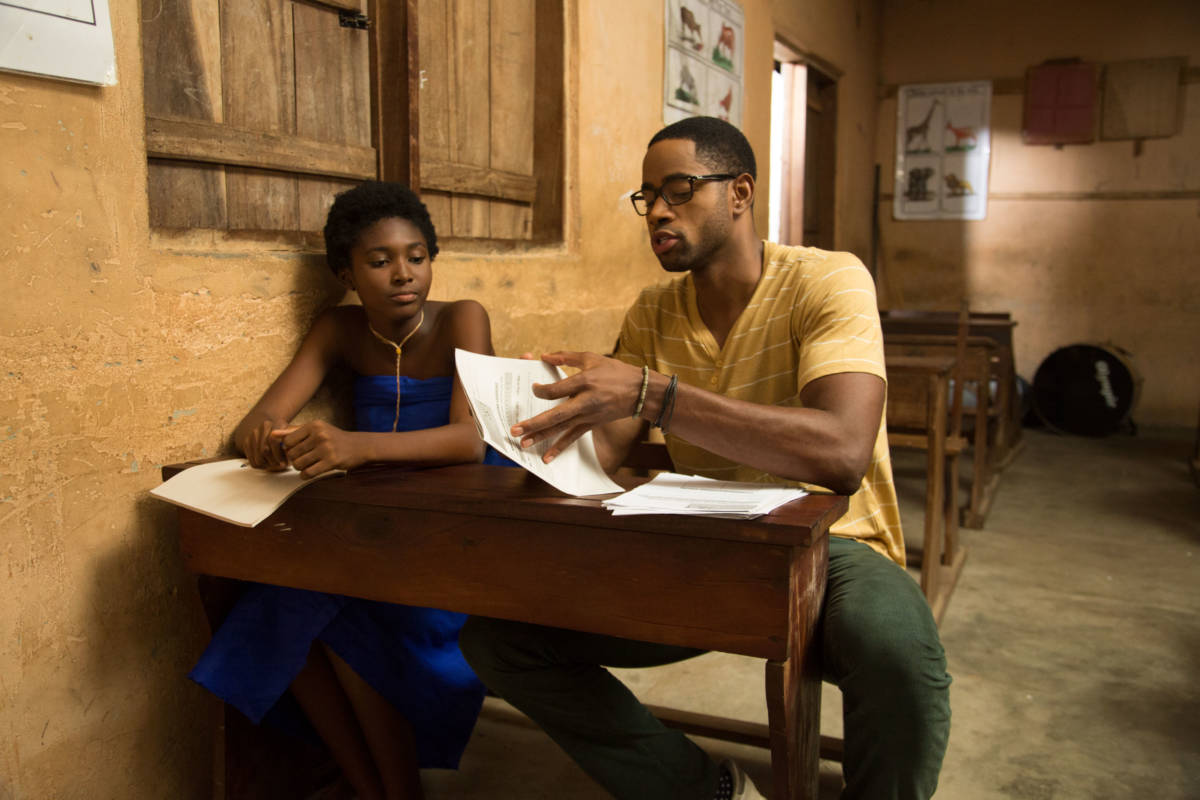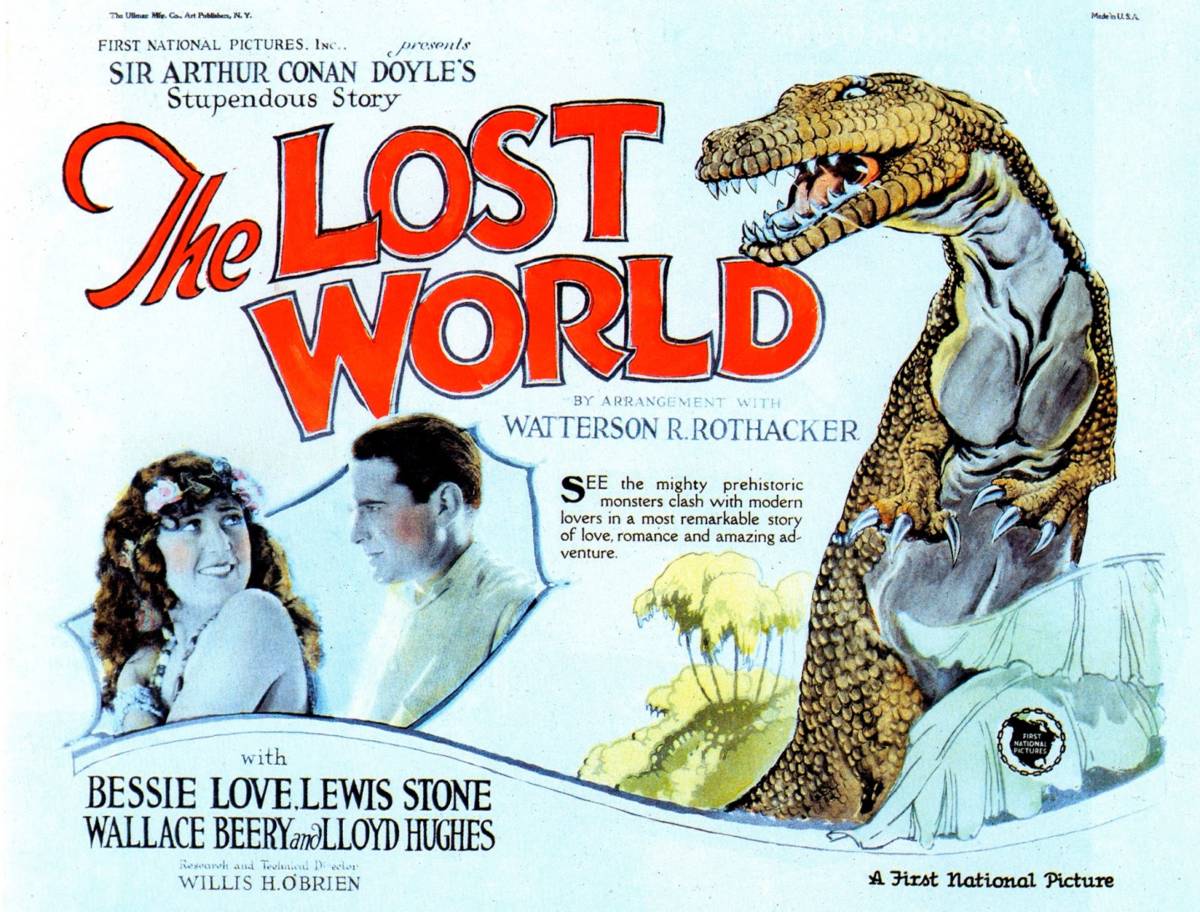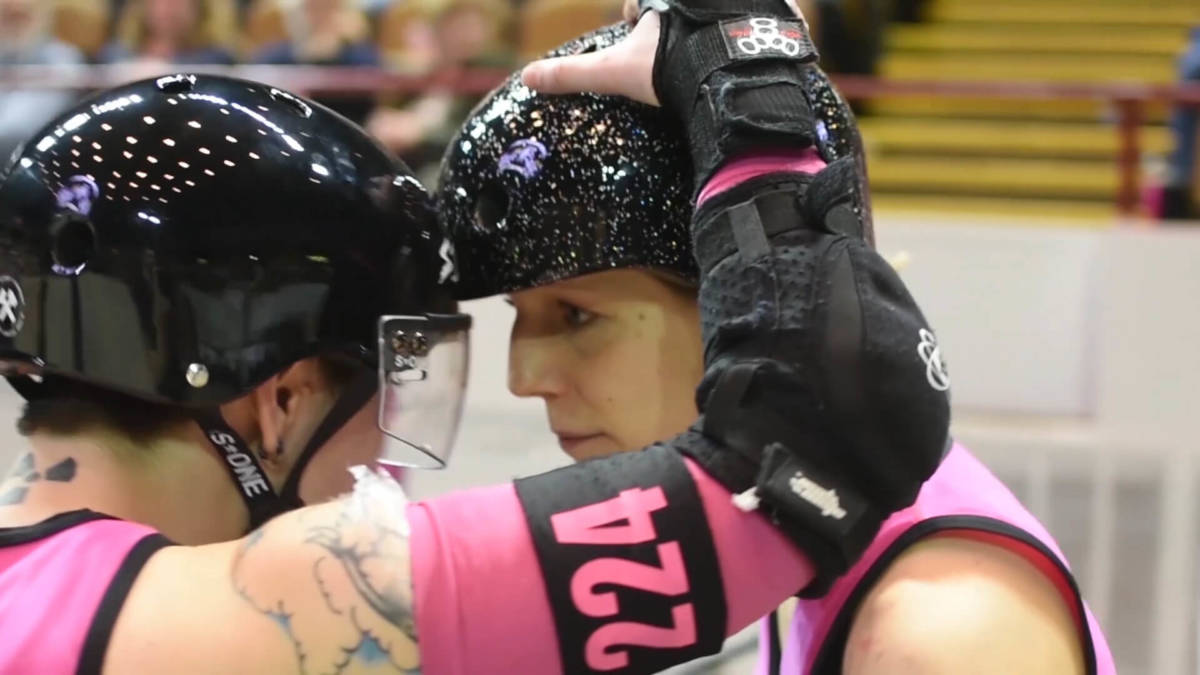If the theme of my previous day at the Milwaukee Film Festival was about division, day four is definitely about adventure, that very human desire to get to a place or state greater than yourself. Whether it’s a destination at the other end of the world or just across town, it’s about becoming more than you are now. Some of the people on-screen were successful. Others were not. But sometimes the point really is just the journey rather than the destination. Or maybe just striving for it.
Like Cotton Twines

The movie starts out with a news report coldly discussing the subject matter. Like Cotton Twines revolves around. In Ghana, it’s apparently customary for girls to be sold into sexual slavery in order to pay off a debt, whether it’s their own, or more commonly, that of a relative. Some women are freed after a period that can last years, but others are enslaved for life for their ancestor’s sins. A woman who escaped described how she was raped for years, and now has children she still struggles to care for since she has been shunned by her family for leaving. And the report indicates that the practice doesn’t seem to be dying out, since the men would rather receive forced sexual servitude than another form of payment.
Once the report ends, we are left with a far more personal insight on this crisis from the perspective of two very different people, that of Micah (Jay Ellis) and Tuigi (Ophelia Klenam Dzidzornu), who will both grapple with the forces that keep this type of slavery alive, albeit in very different ways. Micah is an American volunteer who has come to Tuigi’s remote school in Ghana to teach English, eager to explore his heritage and learn about the country his mother visited and loved. Tuigi is one of his teenage students who yearns for a better life than the women around her have known. When she is told she must go to a shrine to serve the priests there sexually to pay off her father’s debt, Micah attempts to save her. But he encounters obstacles in the form of apathy and learned helplessness on the part of activists and teachers alike, or in the case of the local Christian priest, outright resistance.
The cultural forces that threaten to tear Tuigi apart are strong and ingrained, and nearly everyone emerges as painfully recognizable, flaws and all, as they struggle to help Tuigi and keep her future intact. Only when a fight that seems as doomed as this one does a girl being able to take a final exam feel like such a victory. It makes the movie’s ending, which is obviously supposed to provide a more uplifting, hopeful tone that the film cannot, seem a bit syrupy and idealistic by comparison. It’s the only departure from writer-director Leila Djansi’s (who is also from Ghana) painful, yet somehow hopeful realism as she shows us a country and society just barely beginning to fully embrace change for its more vulnerable citizens.
Rating: 9/10
The Lost World

The adventure in The Lost World is a very different type of journey. A silent film made in 1925, it’s bound to be an old-fashioned adventure, but it’s also fun, suspenseful, and very funny at times. Based on Arthur Conan Doyle’s (who makes an appearance in the beginning as himself) classic yarn, The Lost World follows a crew of explorers who head to South America in search of a land where dinosaurs still roam, and features the period’s best stop-motion effects by Willis O’Brien, who would go on to do the same work for King Kong eight years later. Plus, there’s a way cuter monkey here.

Old-fashioned also comes with the usual problems of the time, though. Prepare for a white guy in blackface, and the girl in the movie not being much more than a damsel in distress, who somehow never gets her hair messed up or her clothes dirty even when things get chaotic. But if you can accept all that as the product of its time, The Lost World still holds up surprisingly well.
The physical humor is great and provides great comic relief, the sets are fun and incredibly creative, and the love triangle is also compelling, at least until it becomes perfectly clear just who’s gotten the girl. Sure, there are some big, gaping plot holes, a lot of repetition, along with some reminders that audiences obviously had longer attention spans back then. But each member of the crew is no less alive for being unheard, with a distinct personality that comes through clearly. Then there’s the live accompaniment Alloy Orchestra provides right next to the screen, which is so incredible, and so perfectly suited to not just the movie, but every scene in it, I almost forgot they were there.
The Milwaukee Film Festival also provided live music last year for Earth, which also transcended its roots as a Soviet propaganda film to be a moving meditation on life and nature. So if anyone has the chance to experience something similar, by all means take it. It’s not just that events like this are rare, it’s that they’re (generally) only done once. So it was a relief that one so similar could not only be just as enjoyable, but stand on its own as a completely different experience. So I would highly recommend it to anyone if they ever get the chance to go to something like this.
Rating: 8/10
Roller Life

According to the documentary Roller Life, roller derby is the fastest growing sport in the U.S. That’s remarkable, considering it’s a sport not just dominated by women, but played almost exclusively by them in a time when women’s sports generally get little to no coverage, attention, or respect. As director Michael Brown himself pointed out himself in a Q&A, if you want to watch women play a sport, you watch women’s basketball, women’s soccer, women’s baseball, etc. But roller derby is just roller derby. There’s no special designation.
The women who comprise the various Milwaukee roller derby teams are very different. They vary by age, class, and race (although the vast majority of the teams are white). Many of them are mothers who also have careers and various other obligations that they balance in order to play their chosen sport. But as different as many of them are, they often have the same reasons for gravitating towards roller derby and for staying there. First and foremost is the sense of empowerment they describe in a world not only populated by so many women, but engaging in behavior that’s often forbidden to them, namely aggression, competition, but also solidarity within roller derby’s tight-knit community.
They describe the confidence they get from it, how much it’s helped them, how liberating it is to basically become another person in the arena, and get any anger and aggression they may have out in a healthy way. The footage of various games are amazing and incredibly suspenseful, and showcase just how strenuous and strategic roller derby is, as well as how easy it is for serious injuries to occur. However, even qualities as positive as those Roller Life has can get a bit repetitive after a bit.
The longer the documentary goes on, the more there is of Brown’s sometimes leering male gaze, which also seems a bit too charmed that this sport exists to answer a few basic questions. Why do some teams continually win, while others continually lose? How do people decide which team to join? Does it have anything to do with Milwaukee’s notorious segregation? Do Milwaukee’s champions ever go on to play in other cities? Brown doesn’t seem to be particularly interested in these questions, and while it is uplifting to follow these women across the season, see them maintain friendships with people on other teams, but I also feed the need for a few facts beyond a few pointers on how roller derby is played and its history in the city. 82 minutes shouldn’t start feeling long, especially with such a fascinating subject.
Some of the coverage you find on Cultured Vultures contains affiliate links, which provide us with small commissions based on purchases made from visiting our site.

